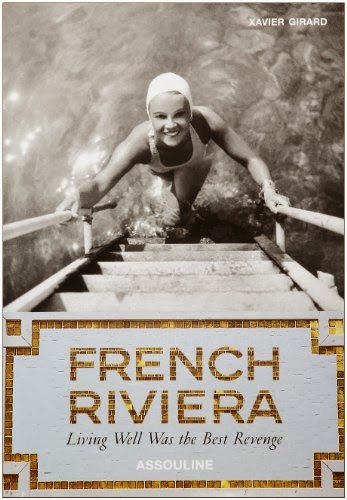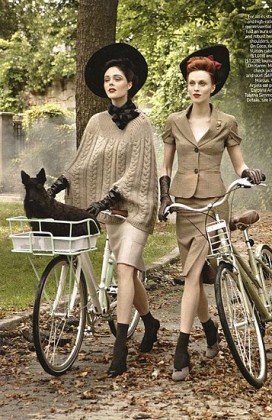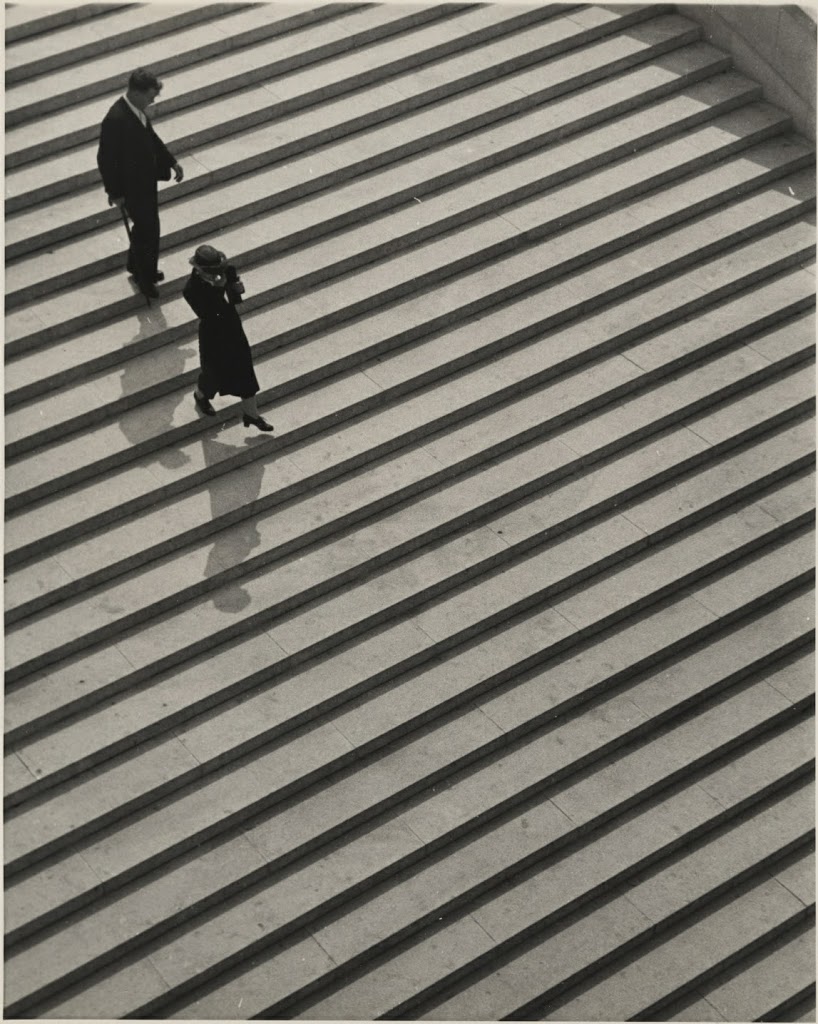 |
People walking down stairs, Exposition Internationale des Arts et Techniques dans la Vie Moderne, 1937.
Photograph F. S. Lincoln.
Fay S. Lincoln Photograph collection, 1920-1968, HCLA 1628, Special Collections Library, Pennsylvania State University. |
As I was writing our recent post on Maynard L. Parker, I couldn’t help but think about F.S. Lincoln (1894-1976), another great American architectural photographer of the same era. Based in Manhattan, Lincoln extensively documented the work of some of the most notable New York architects and designers of the time including McKim, Mead & White, Eugene Schoen, Ely Jacques Kahn, Joseph Aronson and Russel Wright, among numerous others. His work appeared in a wide range of shelter magazines such as Architectural Forum, Architectural Record and House & Garden. He also captured the two New York World’s Fairs and many of the international expositions in Europe, and received large commissions to photograph Colonial Williamsburg and antebellum architecture in the deep south. My favorite F. S. Lincoln photographs are always very distinct, very orderly black and white images of the some of the finest American and European modern design, architecture and interiors.
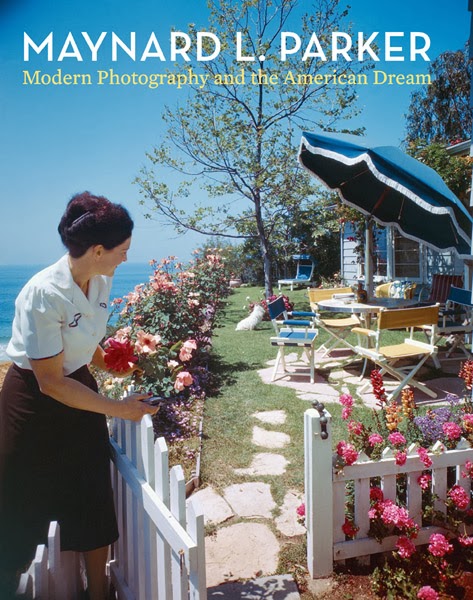
I recently came across a most fantastic book — Maynard L. Parker: Modern Photography and the American Dream. Published in 2012 by Yale University Press, it is a beauty. I must admit, I had never heard of Maynard L. Parker (1900-1976), one of this country’s most prolific and I would also say influential commercial architectural and design photographers of the twentieth century. From the 1930s through the 1960s, Los Angeles-based Parker’s carefully constructed images of a new modern American aesthetic and way of life, captured mainly in Southern California, filled the pages of numerous leading shelter magazines such as Architectural Digest, Architectural Forum, Sunset and Good Housekeeping. But it was with House Beautiful and its legendary editor-in-chief, Elizabeth Gordon, that Parker enjoyed his most successful and important partnership. In addition, Parker documented the homes of a number of Hollywood celebrities, and the work of a number of celebrated architects, among them Frank Lloyd Wright, Harwell Hamilton Harris and Pierre Koenig. Maynard L. Parker Modern Photography became an enormously successful business and Parker himself, working full-time since the age of 16, did without a doubt, embody the American dream. Although the coffee table cut of this volume could be misleading, it contains seven great, scholarly essays about the life, career and legacy of Maynard L. Parker. I found it seriously enlightening and quite a visual feast. And right now, in the dead of winter, those coastal and poolside photographs of sunny Southern California especially spoke to me!
Maynard L. Parker: Modern Photography and the American Dream, edited by Jennifer Watts (Yale University Press in association with the Huntington Library, 2012)
With temperatures below zero, I am happy to have the chance to escape to warmer waters. My good friend and owner of the extraordinary store of the same name, Jung Lee has discovered a new treasure of a book, FRENCH RIVIERA: Living Well Was The Best Revenge. The description on the store website describes the book best by saying: there has never been any place on earth quite like the French Riviera in the 1920s and early 30s. Artists and writers from all over the world—including Picasso, Man Ray, Stravinsky, Coco Chanel, Cocteau, Edith Wharton, Diaghilev, and Hemingway—came to invent a new way of life. It’s no surprise that such a delightful book would be chosen to be among the exquisitely curated objects of Jung’s store.
available at jungleeny.com
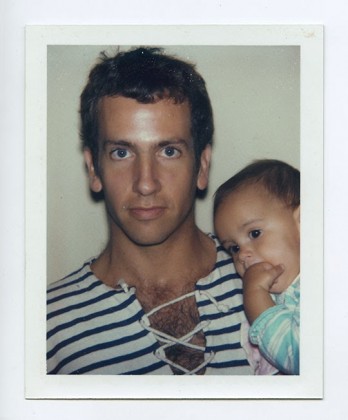 |
| Andy Warhol, Kenny Scharf, 1984, Tang Teaching Museum, gift of the Andy Warhol Foundation for Visual Arts. ©The Andy Warhol Foundation for the Visual Arts, Inc. |
We were very pleased to see a great collection of Andy Warhol polaroids from the 1970s and 80s last weekend at the Tang Teaching Museum, Andy Warhol: I’ll Be Your Mirror, just before it closed. Including portraits of Kenny Scharf, Princess Caroline of Monaco, John Denver, Vitas Gerulatis and even Lana Turner, the collection provides a wonderfully unique window into Warhol’s sensibilities and into his world. As part of the Andy Warhol Photographic Legacy Program, the Tang received several prints, over 100 polaroid photographs and 50 gelatin silver prints in two gifts in 2008 and 2013. In fact, over 180 college and university teaching museums, collections and galleries in this country have received similar gifts since 2007 through this program administered by The Andy Warhol Foundation for the Visual Arts. Over 28,500 Warhol photographs have been gifted in total. Photography so clearly informed his work and the Foundation, quite smartly, hopes these donations will promote discussion and further research in this realm. These photographs and the collections they form are so compelling, we imagine they have already fostered tremendous interest on campuses all over the United States.
www.warholfoundation.org/legacy/photographic.html tang.skidmore.edu
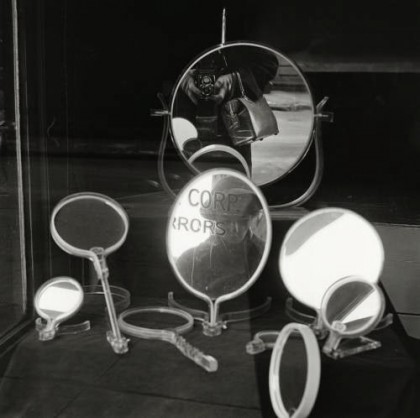 |
Vivian Maier (1926-2009), Self-portrait, 1955
The Maloof Collection |
I have been following the work, and the remarkable story of its discovery, of American street photographer Vivian Maier since it was introduced to the world in 2009, just six months after her death. She is now widely considered to be among the most important photographers of her generation. I love her eye and the way she portrayed the world through her images — often humorous, quite intellectual, always considered.
Born in Manhattan in 1926 to a French mother and Austrian father, Meier was raised mainly by her mother in New York and also in the French Alps for a time. It is believed she began taking pictures in the 1940s in Europe. In 1951 she accepted her first position as a children’s caretaker, a position she would hold with a number of families throughout her life, which enabled her to pursue photography, her mostly secret avocation. By the mid-1950s, Maier had relocated to Chicago where she would remain and whose streets became her subject matter.
To say that Maier was prolific is an understatement, to say that she was intensely private is not. After falling behind on rent payments at the storage facility where she kept her undeveloped rolls of film, negatives, slides and 8mm films, these tens of thousands of items were divided and sold at auction. One of these collections, containing some 30,000 negatives, was purchased by Chicago historian John Maloof. Her work had never been shown in public during her lifetime, it was Maloof who first showed us. In addition to numerous exhibitions, Maloof has also directed a documentary, Finding Vivian Maier, that premiered in September at the Toronoto International Film Festival and will be released in 2014. And last week, Vivian Maier: Self Portrait opened at Howard Greenberg Gallery, a wonderfully curated show and one definitely not to be missed.
Vivian Maier: Self Portrait runs through December 14 at Howard Greenberg Gallery, 41 East 57th Street, NYC www.howardgreenberg.com
https://www.vivianmaier.com/film-finding-vivian-maier/
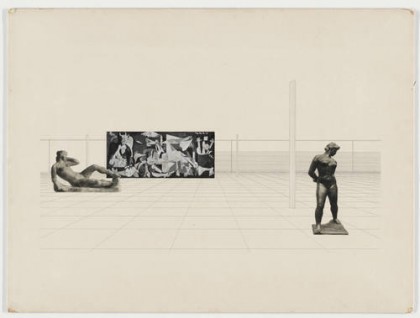 |
| Ludwig Mies van der Rohe, Museum for a Small City Project, Interior perspective, 1941-43, copyright 2013 Artists Rights Society (ARS), collection Museum of Modern Art |
A very nice exhibition opened last month at MoMA — Cut n’ Paste: From Architectural Assemblage to Collage City. The highlights for me were definitely the numerous Mies van der Rohe photocollages, so powerfully serene, so visionary and so great to see in person. I LOVE photocollage. Embraced by the Dadaists and the Surrealists, and clearly the most celebrated of architects, among so many others, this medium dates much further back than the early twentieth century. In fact, it dates to at least the Victorian era. In early 2010, I happened upon a truly fantastic and fantastical show at the Metropolitan Museum of Art entitled Playing with Pictures: The Art of Victorian Photocollage. Organized by the Art Institute of Chicago, it featured previously unknown photocollages from fifteen different albums created by aristocratic women, amateur artists, in 1860s and 70s England. These works are universally superb and without question paved the way for one of the most important and influential artistic and aesthetic traditions.
Cut n’ Paste: From Architectural Assemblage to Collage City is on view at MoMA through December 1, 2013.
Playing with Pictures: The Art of Victorian Photocollage by Elizabeth Siegel (The Art Institute of Chicago with Yale University Press, 2009)
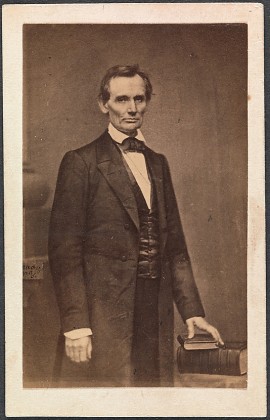 |
Abraham Lincoln, February 27, 1860
Photographed by Matthew B. Brady |
We went to the Metropolitan Museum of Art last week specifically to catch Punk: Chaos to Couture before it closes in a few weeks. Luckily we stayed a bit longer and wandered into Photography and the American Civil War — without question the standout exhibition for me that day. The portraiture in this show is tremendously powerful. The images of generals and soldiers and newly freed slaves, whose destinies at the time of their sitting were most uncertain, are quite haunting and so beautiful. The portraits of patients in a war hospital, documenting their injuries and treatments for teaching purposes (a seriously enlightened idea), are completely fascinating. And those soulful eyes of Abraham Lincoln…
Photography and the American Civil War is on view through September 2, 2013
www.metmuseum.org
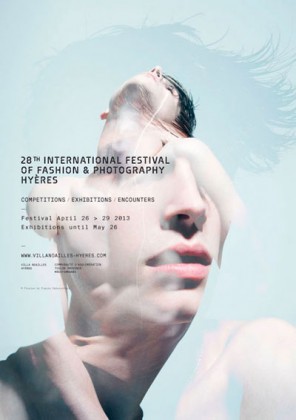
This weekend marks the close of the 28th International Festival of Fashion & Photography organized by Villa Noailles in Hyères, France. This festival seems the perfect legacy for the owners and creators of the villa — Vicomte and Vicomtesse Charles and Marie-Laure de Noailles. Legendary modern art patrons and collectors, they commissioned numerous works of art and financed films in the 1920s and 30s by their surrealist friends Man Ray, Jean Cocteau, Luis Buñuel and Salvador Dalí. Man Ray’s film was actually shot in part at their Hyères residence and starred, among others, the Vicomte and Vicomtesse themselves. The villa was designed by architect Rob. Mallet-Stevens, and is considered one of the earliest and most important modern structures in France. Completed in 1925, its original furnishings represent the work of some of the leaders of the modern movement including Eileen Gray, Pierre Chareau, Georges Djo-Bourgeois and Francis Jourdan. The much-lauded Cubist garden was designed by Josef Hoffmann-trained architect Gabriel Guévrékian. Today, the Villa Noailles through its programs, residencies and exhibitions very clearly represents the keen vision of the Vicomte and Vicomtesse to support and encourage emerging artists and designers. We imagine they would be very pleased.
www.villanoailles-hyeres.com
Now that fair weather seems to be firmly upon us, I have lately and often been enjoying my beloved bicycle — one of the nicest gifts I have ever received. Mine is a vintage-inspired Gary Fisher Trek city bike, the colors of white and green milk glass with a huge metal basket and leather seat and handles. Gorgeous. And what a great ride! I was thrilled a few years back to see Coco Rocha captured with it in this enchanting photograph in the September 2009 issue of Vogue.
May is National Bike Month and today starts Bike to Work Week — think about it!
https://www.bikeleague.org/programs/bikemonth/
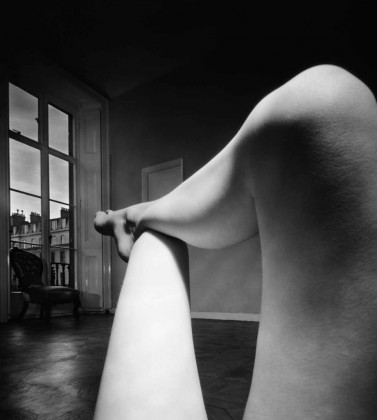
We recently visited the Museum of Modern Art secretly hoping to find Tilda Swinton sleeping in her glass case — unfortunately we were most unsuccessful. Instead, we decided to check out Bill Brandt: Shadow & Light that opened last month. Regarded by many to be one of the most significant British photographers of the 20th century, Brandt was born in Germany in 1904. After a brief stint in Vienna, he spent five years in Paris, from 1929 to 1934, before moving to London permanently. During his time in Paris he briefly assisted in Man Ray’s studio which proved to have a lasting influence on his work, most obvious in his nudes from the 1950s and his photographs of eyes from the 1960s. We found the nudes among the most compelling in this exhibition, quite abstract and some even quite surrealist. His series of eyes of notable artists including Alberto Giacometti and Louise Nevelson, photographed extremely close up, are also among the most powerful in this really great show. Bill Brandt: Shadow & Light is on view until August 12.
https://www.moma.org/visit/calendar/exhibitions/1343



